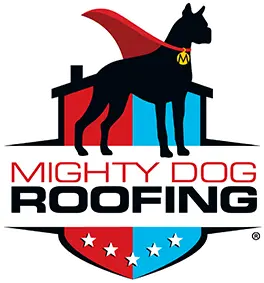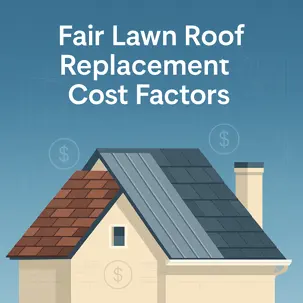Fair Lawn Roof Replacement Costs: Pitch & Material Choice
Replacing the roof on your Fair Lawn home is a big investment. Roof pitch, materials, labor and local weather all contribute to the final price. Understanding how these factors work together helps you make informed decisions and secure the best value.
Understanding Roof Pitch and Its Impact on Costs
The slope (or pitch) of your roof influences both material use and labor:
Steep roofs require more safety equipment and labor hours. Workers need harnesses, staging and extra care, which increases labor costs.
Higher pitch means more surface area. When a roof is steep, more shingles or panels are needed than on a low‑slope roof of the same footprint, which adds to material expenses.
Drainage and design considerations. Steeper roofs shed water and snow faster but require more complex flashing and underlayment details to remain watertight.
A licensed roofing contractor will measure your roof pitch and factor it into your written estimate. Do not accept verbal promises; a detailed proposal ensures you know exactly what you’re paying for.
Comparing Roofing Materials: Asphalt, Metal, Slate and More
Your choice of roofing material can make or break your budget. Each material has distinct costs and benefits:
Asphalt shingles are the most popular and cost‑effective choice. Three‑tab shingles offer a straightforward solution, while architectural shingles provide greater depth and wind resistance at a slightly higher price. Lifespan typically ranges from 15 to 30 years.
Metal roofing costs more up front but lasts 40–70 years. Standing‑seam panels and metal shingles resist high winds and shed snow efficiently. Metal reflects sunlight, which can reduce cooling costs.
Slate and tile (including clay and concrete) add beauty and durability but require a roof structure strong enough to support their weight. Slate roofs may last 100 years, but material and installation costs are significant.
Synthetic shakes and composite shingles mimic slate or cedar without the added weight. They often come with strong warranties but vary in price depending on brand and design.
When comparing materials, consider long‑term value as well as initial cost. A roof that lasts twice as long may be the better investment—even if the up‑front price is higher.
Additional Cost Drivers: Decking, Tear‑Off and Labor
Material and pitch aren’t the only factors that affect price. Other elements include:
Roof size (square footage). Contractors price roofs by the “square,” which equals 100 square feet. Larger roofs require more labor and materials.
Tear‑off of old shingles. Removing and disposing of existing roofing adds labor and dumping fees. Some layers must be removed to comply with building codes.
Roof deck condition. If the underlying wood is rotted or soft, sections may need replacing to meet structural and safety standards.
Ventilation and insulation upgrades. Proper ventilation prevents moisture buildup and extends roof life. Soffit and ridge vents or attic insulation improvements may be needed.
Code compliance. New Jersey Home Improvement Contractor registration and local permitting add a small administrative cost but protect you from unlicensed work.
Ask your roofing company for a detailed written estimate that lists each line item, including underlayment type, drip edge, flashing, and labor. Transparency helps avoid surprises.
.jpg.webp)
Energy Efficiency and Long‑Term Savings
Roof replacements offer a chance to improve energy efficiency:
Cool roof options use reflective shingles or coatings to reduce heat absorption and keep attics cooler during hot summers.
Insulated underlayment and proper ventilation work together to regulate temperature, protecting your home from ice dams in winter and lowering cooling costs in summer.
High‑quality roofing shingles and metal panels resist wind and water better than budget materials, reducing the likelihood of leaks and costly repairs.
Investing in quality materials may lower insurance premiums and extend the life of your roof, which can reduce long‑term costs.
Local Regulations and Hiring Registered Contractors
Under New Jersey law, any residential roofing contractor must have a Home Improvement Contractor (HIC) registration. In addition, verify the contractor has proper insurance and follows safety standards. Look for credentials such as Owens Corning Preferred Contractor or GAF Certified Contractor—these indicate the installer has been vetted by major manufacturers. Always check references and confirm that the contractor will obtain required permits.
Planning Your Budget and Exploring Financing
Here are steps to keep your project on track:
Schedule a professional roof inspection. This helps determine whether a repair or full replacement is needed.
Get a detailed written estimate. This should outline materials, labor, tear‑off, decking repairs and ventilation upgrades.
Discuss financing options and insurance claims. Some companies offer financing plans; consult your insurer about coverage if storms or tree damage have impacted your roof.
Compare longevity and maintenance requirements. Balance up‑front costs with material lifespan and energy‑saving benefits.
Mighty Dog Roofing of Northeast New Jersey offers free roof inspections, written estimates and an Instant Roof Quote tool that uses aerial measurements to provide a personalized ballpark figure. This helps homeowners plan without pressure.
FAQ: Roof Replacement in Fair Lawn
Q: Does roof pitch always drive cost up?
Yes. Steeper pitches require more labor, staging and safety measures, and often more materials.
Q: How often should I replace my roof?
Asphalt roofs typically last 15–30 years. Metal roofs can last 40–70 years, while slate and tile may last a century. Local climate, ventilation and maintenance influence lifespan.
Q: Can I save money by layering new shingles over old ones?
Building codes often allow only two layers of shingles. A tear‑off ensures the deck is inspected, helps the new roof last longer, and complies with manufacturer warranties.
Q: Is metal roofing noisy?
Modern metal roofs are installed with solid sheathing and underlayment that absorb sound. Most homeowners report little difference in noise.
Q: How do I prepare for a roof replacement?
Move outdoor furniture, cover landscaping and secure items in the attic. Choose a contractor with proper insurance to protect against accidents or property damage.
Ready to see how roof pitch and materials will affect your budget?
Request your Instant Roof Quote or schedule a free inspection with Mighty Dog Roofing of Northeast New Jersey to get started.


